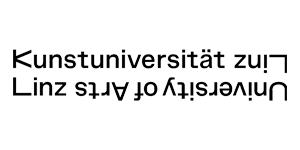Kunstuni Campus at Ars Electronica Festival 2023
The University of Arts Linz is celebrating its 50th anniversary with a special theme that runs through the entire anniversary year and that is also the starting point for reflections on the Kunstuni Campus 2023: radical collectives–a gesture that puts the spotlight on collectives and, above all, tests out their activist potential, but also, a possible answer to the question of who owns the truth. The collective: a response as a metaphor that focuses primarily on the diversity found in a collection of people, their renegotiated content, and the process of negotiation itself, while individuals take a backseat role within the collective. Social media and technologically enhanced platform processes celebrate individuals and their opinions, yet tend to inhibit the potential of negotiating and arguing in the greatest possible candor and diversity of approaches. This makes the search for collectives and the form of their radicality of particular significance. However, radical collectives do not exclusively mean that all participants must share the same convictions and demonstrate as much in activist actions. Rather, they encourage the questioning of one’s own privileges and responsibilities, bolstered by dialogue, with the goal of making social transformation possible. In the arts, collectives differ greatly from other forms of communities, seeing themselves rather as an organization for thrashing out and testing the collective stance, for challenging pooled individual opinions. The individual’s interests are (usually) given less priority for the sake of the common good. What Dada, Fluxus, the Wiener Gruppe or Guerilla Girls (to name just a few influential, perhaps stereotypical, art collectives as examples) represent for the art world has already been elaborated upon and displayed in museums. However, it is in the nature of collectives in the art world to question the very institutions and art market themselves, making them difficult to plan or direct by the latter. In order to free oneself from historical images and stereotypical notions and attributions of collectives, a pluralistic approach is needed. Further, the challenges of our time can only be understood in their diversity and multiplicity; they can only be tackled employing a collective approach to resources, knowledge and skills. The Kunstuni Campus at the Ars Electronica Festival is thus looking for new forms of collectives and evidence of their import. To what extent can collectives exist only briefly? Who can be part of collectives? Only humans or other sources of thinking and ideas? To what extent is conversation and discourse between people and systems a hindrance or a benefit to content and its realization in the collective? How would the structure in a collective with humans differ from that containing non-humans? And what can art and activism contribute in terms of demonstrating ideas? The Kunstuni Campus aims to explore a plurality of collectives and promote an understanding of radicality, one that is not built on ruthlessness but aims to dismantle hierarchies and create participatory and inclusive spaces in the spirit of collectivity based on equality.
ausstellungen.ufg.at/radicalcollectives
Postdigital Lutherie
-

BOT or NOT
Thomas Geissl (DE)
BOT or NOT is an interactive project, a dating app that explores human-machine relationships. As technology continues to advance, questions regarding the ethics and social norms surrounding relationships with artificial intelligence are gaining importance.
Media Design
-

Forum: Digitale Bildung
Konzept: Martina Sochor (AT), Elke Hackl (AT), Josef Buchner (AT/CH), Hans-Christian Merten (AT); Teilnehmer*innen: Katharina Hof (AT), Ian Banerjee (AT/IN), Artist Meditaçoes (AT), Martin Bauer (AT), Sonja Hinteregger-Euller (AT), Jan G. Grünwald (DE/AT), Sebastian Paar (AT), Conny Lee (AT), Elke Hackl (AT)
The pedagogical year 2022/23 was dominated by one topic: digital basic education. The subject, which is now compulsory at a lower secondary level, was implemented, schools were equipped with tablets, and teachers already teaching the subject were provided with the necessary knowledge and skills in a four-semester university course.
Time-Based and Interactive Media Arts
Deep Space 8K Projects
-

_knowledge_and_consent_
Isabel Schulz (AT)
“if there is no price, you are the product.“ is a common saying when it comes to free online services like Facebook, Instagram or TikTok. But few actually know how much of their personal information they hand over when hitting that “accept Terms and Conditions” button.
-
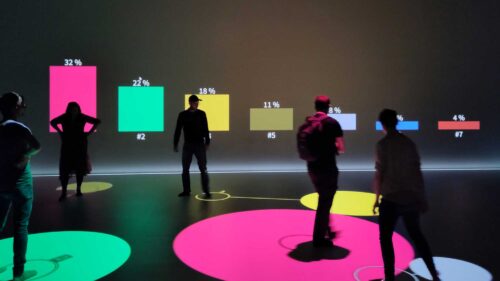
All you can eat
Johannes Bauer-Marschallinger (AT)
All you can eat makes you feel the very principle of late-stage capitalism: money goes where money is. It’s an interactive game for 2-8 people with minimalistic design and few simple rules. A positive feedback-loop ensures an unbalanced outcome.
-
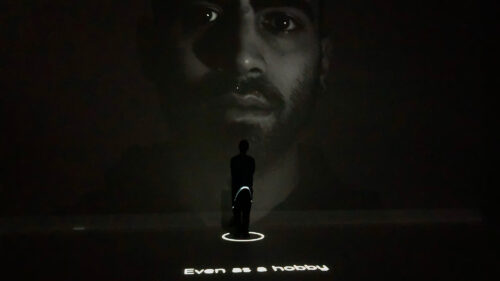
Facing
Simon Hehl (DE)
“I can feel the gaze on me – and that brings me a lot of satisfaction.”Facing is an interactive artwork for Deep Space dealing with our gaze. The dark room, huge faces and whispering voices will create a very intimate and intense experience.
-

MeatLove
Paul Klusacek (AT)
Industrial can consumption with consequences
-

Microbial World
Jelena Mönch (DE)
Ever wondered what those tiny bacteria that inhabit our world actually look like? Microbial World offers you the chance to explore that! By using captivating visuals of microbes, this interactive platform provides a gateway to the world of science.
-

ShadowPulse
Janik Valler (DE)
Explore the interplay of light, shadow and sound as you shape and shift the captivating monochromatic landscapes with every step.
-
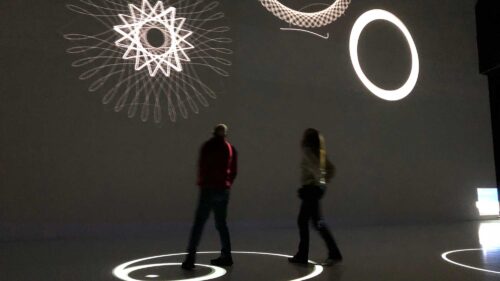
Spiro
Holunder Heiß (AT)
Spiro is an interactive piece for the Deep Space Environment where two persons can generate unique Spirograph like patterns by meeting in the space and staying close together.
-
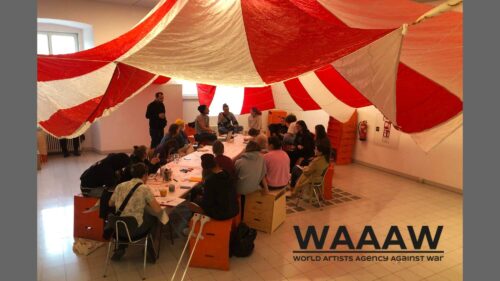
WAAAW world Artists Agency Against War: Public Interventions
Space and Design Strategies dept. @KunstUni (AT)
WAAAW is an Artistic Agency Against War. War is an unjust odyssey, in its premises and in its outcomes; war makes murder legitimate; war is a spiral at the bottom of which today there is the risk of the extinction of life as we know it. The Agency – the Assembly – the Archive Space…
Time-Based and Interactive Media Arts
Films
-

Aberration
Tolga Karaaslan (AT)
A Physical Narration Artwork that serves as visual research for a short film about a woman who lives in a fictional authoritarian Europe.
-
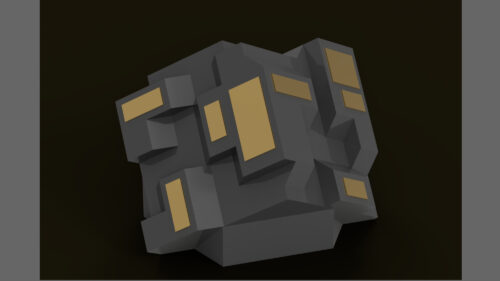
Alien Harmonies
Jakob Luckeneder (AT)
Alien Harmonies, an intriguing interactive sculpture, captivates with its enigmatic design. Crafted from black glazed clay, this unique artwork features a collection of brass touchpads.
-

Atmen
Elena K. Richtsfeld (AT)
A short film dystopia that leaves a lot of room for speculation with its experimental design. But one thing should be said: we are in a thought experiment in the distant future, society is experiencing a change and an institution is taking radical measures to reduce the human population.
-

Compass: Dreamscape
Mamoun Bakour (SY), Hazem Wakaf (SY)
An experimentation of resting and rediscovering human existence, and conflict in human emotions. In a brutal world where we are driven into dealing with a new skin, what would be the feeling of the first touch?
-

creative differences
Isabel Schulz (AT)
Within thirty minutes and with twenty to thirty reference images, the AI system Stable Diffusion can learn to imitate the style of any human artist. The more time is given to training, the more exact the results will be.
-
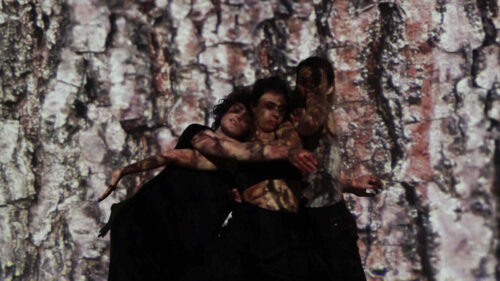
DANCING BARK
Helena Brunnbauer (AT)
This experimental movie explores the connection between tree bark and human skin by projecting bark onto three dancers in the studio. As the bark dances with the performers, the similarities become apparent, highlighting how both separate and protect us from the world, at the same time they are our tools to explore our surroundings.
-

Das Sockenpaar und der Sockendieb
Friederike Weber (DE)
The experimental short film is inspired by the photo film genre. It is about platonic relationships and relationships in general. The photo film questions social patterns and does so by giving insights into the relationships and autobiography of the artist herself.
-

es mucho tiempo
Friederike Weber (DE), Juliana Vargas Rodriguez (CO)
es mucho tiempo is an interdisciplinary project between dance and videography, a collaboration between the artists Juliana Vargas Rodriguez and Friederike Weber. In the project es mucho tiempo, the artists deal with the perception of time.
-

ESOPTRON
Ariathney Coyne (US/GR), Daniela Hanelová (CZ)
ESOPTRON, Ancient Greek for mirror, is an experimental dance film, based on a dance duet of the same title. The project is the artists’ response to the changes that accompanied the global pandemic and explores the themes of touch, seclusion, longing for togetherness and the necessity of physical contact.
-

Gizem—Scent Of Their Flowers
Tolga Karaaslan (AT), Gizem Kuş (AT)
Scent Of Their Flowers deals with the desire for deep intimacy. The attempt to trust one’s inner light and strengthen it. Even in seemingly dark times. This music video was made for the debut single of the band Gizem.
-
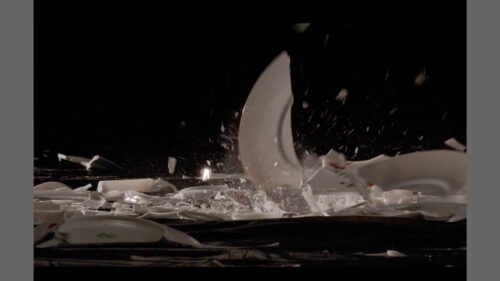
Hysteria
Lisa Studener (AT)
Am I allowed to be angry as a woman? Why am I so angry? What should I do with this feeling? These are questions that many women are probably familiar with. However, in our system, women are often not given space to be angry.
-

Irgendwann wirst du verstehen.
Patricia Göckert (AT)
The movie is about giving queer people the opportunity to use their voices in order to inspire others to find theirs.
-
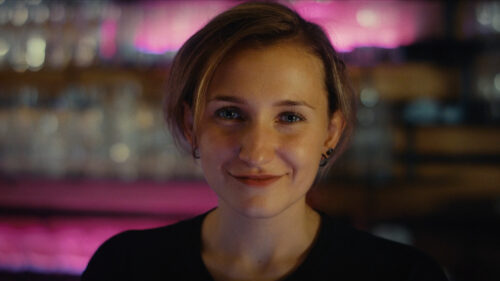
KIra Chatbot
Verena Mühling (AT), Lena Isabella Deisenberger (AT)
KIra is a twelve-second short film concerning our insecurities and fears when it comes to dating, love and truly opening up to someone. The very short, short film aims to comment on what can potentially happen when we try to outsource dealing with our love related problems and let them be solved by bots rather…
-

long distance
Emilia Vogt (DE)
Text messages are the connection between long distances, written words become carriers of emotional states that are otherwise often conveyed via gestures, facial expressions and body language in general.
-

lucid dream
Emilia Vogt (DE), Philomena Juen (AT)
In a lucid dream the dreamer becomes aware of their own actions in the dream. While dreaming the dreamer can get some control to navigate the direction of the pathway, the approach to a character or the whole environment.
-

lust
Patricia Göckert (AT)
Female pleasure, masturbation, orgasms. Topics that are often avoided. Who is to blame?
-

Memories Of The Foreign
Tolga Karaaslan (AT)
Revisiting places and memories of Fatma Selek, the grandmother of the filmmaker, who came to Wels, Austria, in 1973 as a guest worker. Her interview from 2012 gives insight into her experiences and struggles, such as being separated from her children for years, language barriers and the feeling of being torn between two countries.
-

MICROCOSM
Hannes Buchwieser (DE), Katarína Krupičková (SK)
Together with Katarína Krupičková, a concept combining contemporary dance and images from a Zeiss Primovert microscope was developed. Together, we transformed and implemented the emotions and impressions created by the confrontation with these microcosms.
-

Neinblicke
Ben Ramsmaier (AT)
Neinblicke is an interactive sculpture that is possessed by an evil and chaotic algorithm. Its only goal is to protect the secret lying within. As soon as one tries to find out what is hiding inside and steps in front of it, the wooden cube closes down.
-

nexus
Ania Böhaker (AT)
nexus is an approximately 124 x 124 x 124-cm cube surrounded by tubes. These tubes are all connected to each other. There are three tubes on each side of the cube that protrude from and into the cube.
-

Outside In
Ildiko Mayr (AT)
Outside In is an interactive artwork that consists of three digital drawings showing abandoned places. Through objects shown in the drawings, the visitor can explore sound files that tell the story of what happened in these places before they were abandoned.
-

pars
Ania Böhaker (AT)
Divided—different opinions—separated—parties—dispute—war—conflict—different perspectives … are some of the most important keywords in connection with the video installation pars.
-

Posthuman
Carlotta Borcherding (DE)
Posthuman is a photo series established at an abandoned location revealing faces and their posthuman identities. The project is based on a collaboration between the Institute of Dance Arts (IDA) of the Anton Bruckner Private University and the Department of Time-based and Interactive Media Arts from the University of Arts Linz at the POSTCITY Linz.
-

RAS Awakening
Janik Valler (DE)
RAS Awakening is an audiovisual sculpture that repeatedly comes alive, reminiscent of a futuristic being arising from slumber. Generative sounds orchestrate the sculpture’s awakening, infusing the space with an immersive audio narrative and a synchronized dance of light, rotation and glitch.
-
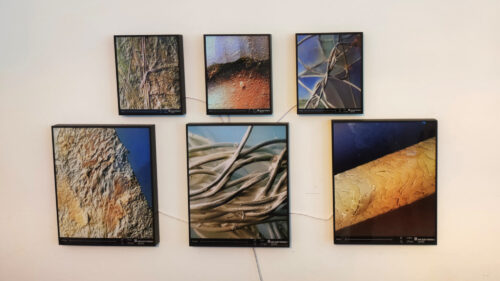
SMALL SPACES LARGE ISSUES
Hannes Buchwieser (DE)
Using a scanning electron microscope, I analyzed hair, fibers of a sweater, a coin, dust from the laboratory and a torn piece of a passport to elicit a deeper layer of meaning from these objects than is ascribed to them in everyday life by visualizing the invisible, illuminated by light elements.
-

StarryPainter
Julian Holzer (IT)
StarryPainter is an interactive artwork that allows visitors to draw a digital starry sky. Visitors can switch between different scenes that, when viewed in detail, hide clues about the impact of human actions on the starry sky.
-
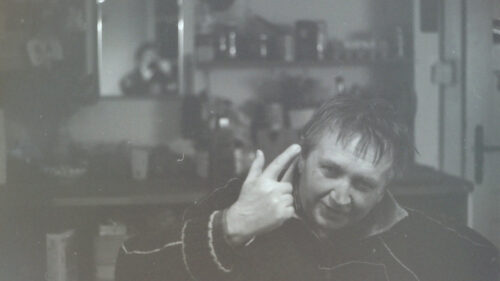
The most beautiful place on earth
Sofia Jüngling-Badia (AT)
Eleven analog photographs, depicting scenes from everyday life in an unusual living situation, accompanied by audio recordings of a fragmented narrative about being the daughter of a father with dementia.
-

This is the End of us
Valentin Vojka (AT)
This is the End of us is a short experimental film about a young witch constantly on the verge of a breakup. She appears to be stuck in an endless loop between ending and salvaging her relationship with an unseen entity, as she questions her existence in her isolated room.
-
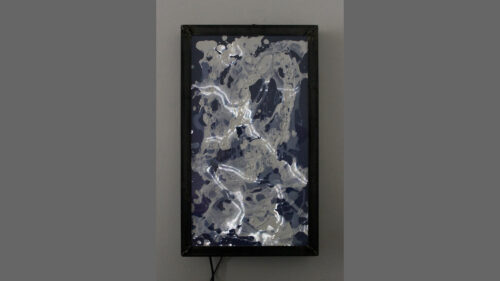
translucent reverie
Janik Valler (DE)
translucent reverie is an artwork that combines various mediums to create a captivating visual experience. It seamlessly merges the physical and digital realms, blurring the boundaries between traditional art forms and contemporary technology.
Time-Based and Interactive Media Arts
Performances
-

{LOW_LEVEL_LITERATURE}
Daniel Bierdümpfl (DE), Ben Wesch (DE/AT)
Reading and writing the unwritten onto digital papyrus Deciphering the unintentional Careful assembly of invisible particles creating audible pavements walked upon & forgotten piece by piece, invisible mosaics
-

Antichromatic
BASIX_Latency, Botond Kelemen (HU), Lynn Mayya (SY)
BASIX_Latency’s performance creates immersive, interactive environments with generative real-time visuals and audio using a node-based visual programming language for real time audio interactive content creating a truly interactive and dynamic experience.
-

Aware By Care
Emilia Vogt (DE)
A space full of objects, people, needs and time. The performance Aware By Care combines everything using an alphabetical order of needs, and through actions taken out of daily life, brings it into another context.
-

dBlech
Daniel Haas (AT)
An object that merges the visible and the audible layers of perception. Emerging soundwaves that manipulate and distort light rays.
-
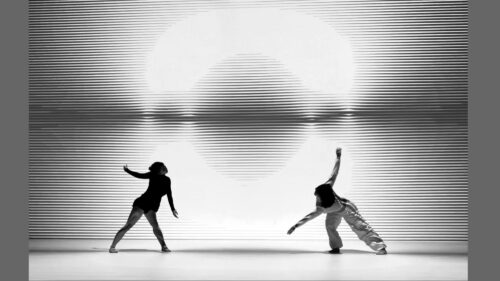
Environment
Carlotta Borcherding (DE), Semi Lim (KR), Veronika Maidukova (UA)
Environment (Umgebung) is an interactive space where users of the interface, the floor, can create visual content based on a simple line pattern. During the interaction the users’ movement and their connection with one another are visualized and shown on the walls.
-

Harmony Fusion
Masoud Simaei (IR), Bashir Bastan (IR)
The project showcases ongoing research by presenting drafts that explore how the integration of sounds and visuals can create a captivating performance.
-

Heaven 47
Teodor Dumitrache (RO)
Heaven 47 represents the space between reality and imagination, where the sounds of the future shape the feelings of the present.
-

LEKANI
Alejandra Benet (ES/US), Ariathney Coyne (GR/US), Sara Koniarek (AT), Lucia Mauri (IT)
LEKANI is an immersive audiovisual contemporary dance performance. The powers that surveil society are invisible to the surveilled. These powers are abstract and self-regulating—applied from all angles.
-

NoiseRhythmLanguage
Ania Böhaker (AT), Ariathney Coyne (GR/US), Carlotta Borcherding (DE), Emilia Vogt (DE), Friederike Weber (DE), Chiara Wernbacher (AT)
NoiseRhythmLanguage is a collective sound performance created by recordings of the environment. The sounds are arranged within a system ruled by noise, rhythm and language creating a unique performance of various sound patterns.
-

Paragon
Carlotta Borcherding (DE), Semi Lim (KR)
Paragon is an interactive Deep Space 8K-performance reflecting on the question of space and interpersonal communication. As two characters become aware of themselves, tensions grow.
-
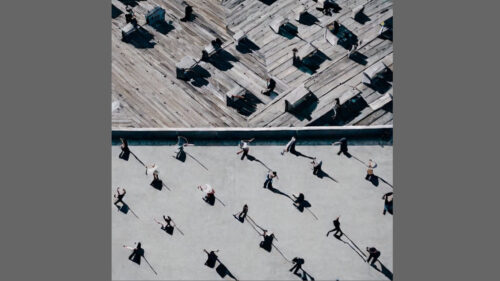
Scoring the Body: Unlocking Movement Potential
Ariathney Coyne (GR/US)
Scoring the Body is a daily movement workshop that welcomes festivalgoers to take some time off, to stretch, shake, observe and research their own physicality.
-

Shattered
Alex Villard (MX), Jannis Labner (AT/GR)—
Shattered is an exploration of the beauty that can emerge from brokenness and vulnerability. A live performance exploring experimental electronic glitch beats, synced visuals and contemporary dance.
-

Studi-lounge
Friederike Weber (DE), Verena Steininger (AT)
The Studi-lounge will launch its bar/café with an arts program and performances in the foyer of Hauptplatz 8 during the Campus Exhibition.
-
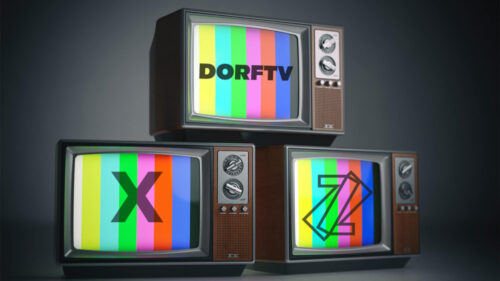
Timecats X DORFTV
Elena K. Richtsfeld (AT)
What would happen if art students created a live show? The students of Time-based and Interactive Media Arts ask themselves this question in their attempt to break the boundaries of television.
-

What the skin says
Sofiia Zeifert (RU)
What the skin says is a collaborative project between dancers, choreographers, visual artists and sound artists. The choreography represents the individual languages of each performer, based on their personal experience of mental and physical pain expressed through the body and words.
Time-Based and Interactive Media Arts
Time-Based Media
-
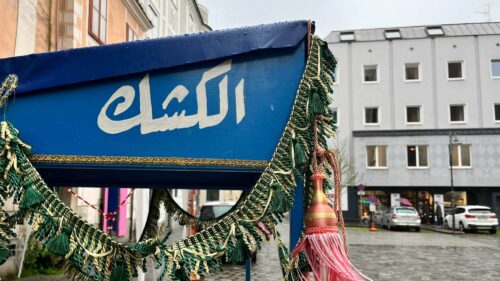
El Kschk Sessions
Lama Ghanem (SY)
El Kschk is a mobile sound station that roams in public space hosting musicians from all over the world and recording them with the sounds of the city on cassettes and phonograph cylinders.
-

g*ALLERY
Simon Hehl (DE)
gALLERY* is a hybrid, interactive and fluid art collection – an exhibition within the exhibition. Flat screens become canvases on which modified live camera recordings are played. Viewers oscillate between artistic object and staged self.
-
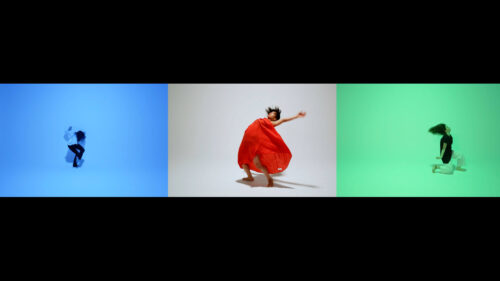
IN MOTION
Thomas Guggenberger (AT), Laura Roth (AT)
The three-channel video installation shows three dancers in infinite, vividly lit spaces that seem to have no boundaries. The dancers from the Anton Bruckner Private University in Linz move slowly and fluidly, their bodies becoming almost weightless in the ethereal environment.
-

schlaftrunken
Clarissa Cohausz (DE)
schlaftrunken is a German noun that means literally “being drunk with sleep”—describing that confused feeling after a long nap when one is unsure of the dimension they have woken up into.
-
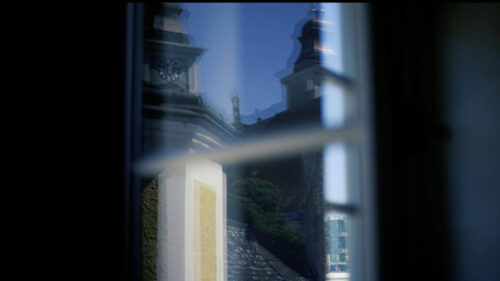
V:A:D visual acoustic diary
Gabriella Vincze-Baba (HU)
My project, which I started in the summer semester of 2022, is about the relationship between sounds and visual perception. The philosophical background is the work of Ponty: The Perceptual Faith and its Darkness.
-

W I L L Y O U W A L K W I T H M E?
Sanaz Rafii (IR)
The project W I L L Y O U W A L K W I T H M E? is an interactive video installation. Since September 2022, with all the happenings back in my home country in Iran, I went through different stages of dealing with this situation. Physically living in Austria but mentally living…
-
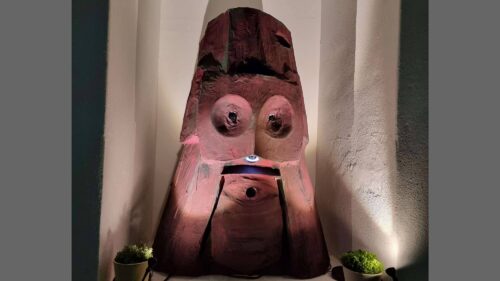
Word Of Gpd
Jakob Steininger (AT)
As AI-based software and tools gain prominence, a cultural shift in our relationship with machines is taking place.
Time-Based and Interactive Media Arts
Visual Communication: All Sorts of Things… a design fiction investigating talking objects, (dis)obedient and dreaming of intelligent machines
Post-humanist design enables a world in which humans and non-humans (things) take center stage. It criticizes the exploitation of non-human species and materials. But what role do digital technologies play in this interaction? How will we communicate with our digital and intelligent things in the future? This design fiction show imagines future things and our options for action. We present different scenarios with intelligent objects that provide a glimpse into everyday situations in our near-future life: spiritual technologies provide mind changing personal experiences with immersive jewelry, AI psychotherapy sessions invite to talk to intelligent machines with pushback, narrative space archives for media activists tell stories of freedom and resistance and sensorium kits offer a mutual understanding with plants for a more symbiotic relationship and cohabitation.
Concept and exhibition development: Barbara von Rechbach, Marianne Lechner
-
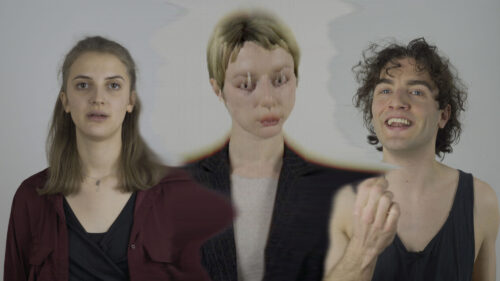
Artificial Therapy
Leoni Demand (DE)
Experience the future of talk therapy: tailored to your needs, available 24/7, practically infallible, right? Step into an intimate room and become part of somebody else’s therapy session.
-

How are you, my digital friend?
Marianne Lechner (AT)
Imagine it is 2040, and we live together in a collaborative network of diverse digital entities. This scenario proposes diverse entities as part of our social life—they are embodied, social and emotional.
-
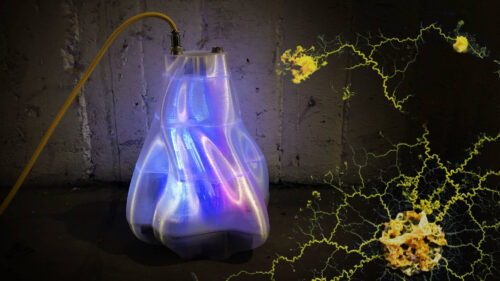
many-headed (…)
Nadja Reifer (CH), Tina Frank (AT)
The installation many-headed (…) attempts to make tangible the interconnectedness of multi-headed organisms in order to enable a recollection of the interconnectedness with entities.
-
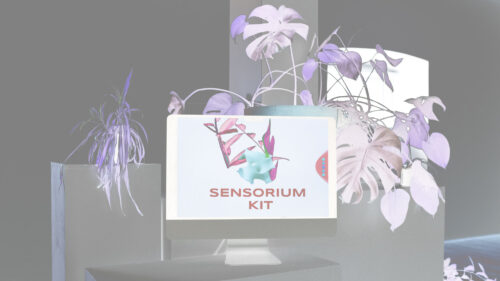
Sensorium Kit
Sophie Morelli (IT)
The Sensorium Kit project seeks to enhance the connection between humans and plants by way of shared sensorial experiences. Users can engage through an interactive website to get a glimpse of the future kit’s potential.
-
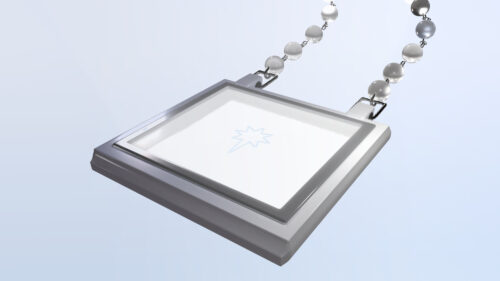
The Omnia Project
Laia Bonias Garriogos (ES)
In an extremely individualistic future society, religion and spirituality find new relevance in daily practices and rituals. High-tech enterprises have entered this realm and offer sacred spaces where machines fuse with the human spirit.
-

ZUNITY
Bashir Bastan (IR), Masoud Simaei (IR)
ZUNITY is an immersive audio/video installation by Bashir Bastan that puts the audience in the flow of a modern revolution and addresses us with simple psychological questions from conflicts between the individual and society.
Media Culture and Art Theories
-

Liebes Google,
Inga Morawski (DE)
How much can we learn about a person by looking at their online activity? Would you rather reveal your diary or your Google searches? Liebes Google, (Dear Google,) is an installation that presents the artist’s real Google searches from a time period of seven months from 2022 to 2023.
Sculptural Conceptions / Ceramics
-
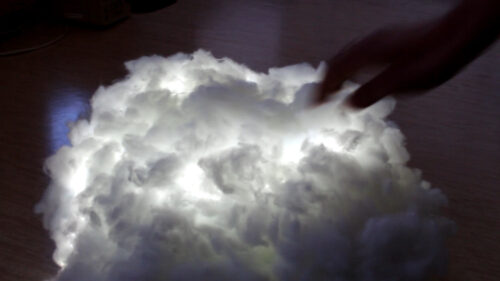
Breathing Clouds: A kinetic sculpture exploring the interconnectedness of objects and the natural world
Sheida Ramhormozihosseinizadeh (IR)
Breathing Clouds challenges traditional value notions, embracing objects-oriented-ontology (OOO) where all objects hold equal ontological status. It urges viewers to recognize the aesthetic and conceptual worth of objects, regardless of origin or material.
Design and Technology
-
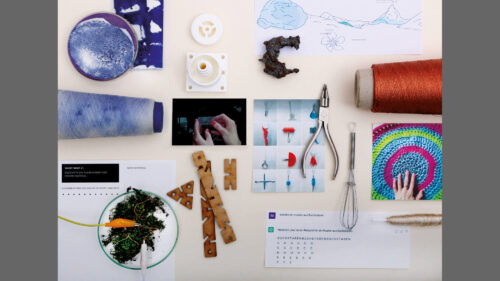
Crafting Futures Lab
Thinking through material, touching new ideas, crafting futures—as part of this year’s Ars Electronica Festival, the Crafting Futures Lab invites you to explore formats for material-based, physical interactions. We understand material processes as a form of inquiry and access to knowledge about matter, forms of production and connected personal and situated contexts, such as social,…
Fashion & Technology
Fashion & Technology Department
Unusual materials open up new possibilities. The Material Intervention Lab of the degree program explores new textile territory: instead of conventionally producing and processing fabrics, experimentation, cooking and petri-dish cultivation take place here. New materials bring unusual properties to fashion, such as flexibility, brittleness or moisture. They have scents and flavors and enable local production methods of the future. Bacteria and plants offer new potentials for gently and sustainably dyeing textiles.
-

D o i t y o u r s e l f- B r a i n C o m p u t e r I n t e r f a c e (D I Y—B C I)
Seann Jawell (NL)
Combining traditional skills, tech, and mindfulness, I introduce a unique approach by merging EEG and self-therapy. DIY–BCI offers a custom cap for ADHD and anxiety, providing hands-on kits and mental health discussions.
-
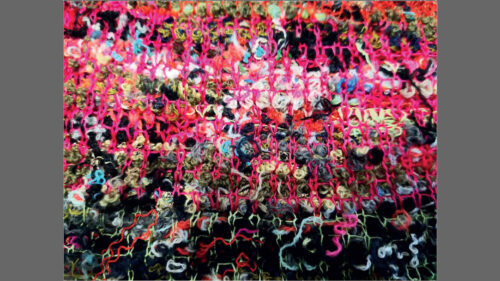
FROM WASTE TO WOW.
Marilies Luger (AT)
Where you break an egg, you break a bone—in the specific case of the knitting industry, this means yarn waste and faulty knitted fabrics. This waste is incredibly diverse in color, composition and structure and comes to light especially at the end of the working day when the production hall is cleaned.
-

Staring constantly, something constantly stares at me
Alberti Toni (DE)
I use horror as a matrix of a world behind the world, walls of cardboard, in the flickering light of fluorescent lamps and exit signs in doorless buildings; a matrix in which fashion dreams us as people who do not exist; as bodies that cannot leave this media space and we stare at these images…
-
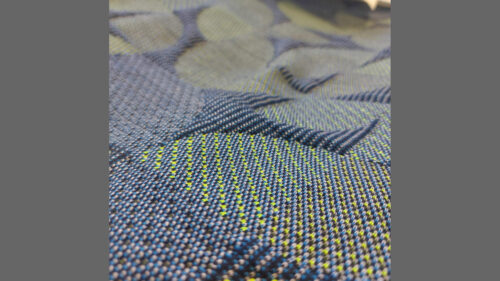
Textile-ID
Mira Haberfellner (AT)
The development of knit patterns with digitally readable codes enables garments and designers to communicate with wearers. Through this combination of fashion and technology, the garment itself becomes a medium that interacts with consumers, allowing them to connect more deeply with fashion and the stories behind it.
Space & Design Strategies
Architecture
-

urban:\GLITCH
Lisa Ackerl (AT), Daniel Schöngruber (AT)
urban:\GLITCH is a magazine accompanied by a research homepage. The title refers to the physical manifestation of an irregularity in the programming of urban space.
Facade Projections
-

At the Pigeon Loft
Ruth Größwang (AT), Susanna Melem (AT), Severin Standhartinger (AT)
Where there is a city, there are city pigeons. And where there are city pigeons, there is also resistance. (Fahim Amir, freely quoted after Michel Foucault) The performance moves in the tension field between urbanity, human and animal, olive branch and fecal bomb.
-

Essay on Symmetry
Hubert Lobnig (AT), Moritz Matschke (DE)
The symmetrical arrangement of the bridgehead buildings at Linz’s main square, and the mirror-image equality of the two façades, are the starting point for a site-specific intervention reflecting on the preference of totalitarian systems for simple forms of symmetry.
-

we cascade
Johanna Bruckner (AT), Tina Frank (AT), Claudia Rohrmoser (AT), Dagmar Schürrer (AT), Audio-Mix: Karin Fisslthaler (AT)
Four artists collectively explore the origins of ideas and respond to each other’s work with human algorithms. The vertical projection format is reminiscent of social media, ideas flowing in a cascading mix of expressions, reactions and mash-ups.
Poster Session
-

Poster Session
Alexia Achilleos (CY), César Escudero Andaluz (ES/AT), Myrto Aristidou (CY), Charleen Elberskirch (DE/CH), Vanessa Graf (AT), Martin Höfer (DE), Fabricio Lamoncha Martinez (ES), HyungJun Park (KR/DE), Qingyi Ren (CN/UK/CH), Nomi Sasaki (PE/JP/CH)
Our poster session provides a unique platform for PhD students to present their artistic research, connecting theory, practice and critical inquiry.
ONB-Labs
ONB-Labs is the digital platform of the ONB (Österreichische Nationalbibliothek / Austrian National Library) for scientific and creative use of digital collections. Within the framework of the EU-co-funded project Open Digital Libraries, the ONB Labs invited students of the University of Arts Linz and University of Applied Arts Vienna to participate in a Web Residency in 2022 and an Art Program in 2023. The project was initiated by Sophie Hammer and Martin Krickl from ONB Labs and is supervised by Irene Posch and Manuela Naveau, both professors at University of Arts Linz. The observations resulted in a collaborative paper with the topic “Archiving the In-Between”.
-
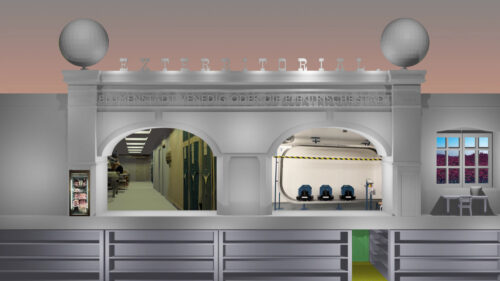
Blumenstadt Venedig oder Die Elektrische Stadt. Exterritorial.
Katharina Birkmann (DE/AT)
Virtual archives are created by simultaneously “being in space”, re-animating hybrid impressions of space, time, memory and knowledge. The Würstelprater and its historical development since 1895, between real places and fictional architectures, introduces concepts of representation, authenticity, visibility and stories of simulation, renaming and virtuality.
-

Echoes of Experience
Valentina Rodríguez (CO/AT)
This project presents a digital open letter using Travelogues- and AKON-archives from the library’s digital collection. This work arises primarily from a sentimental relationship with the archive and personal experiences as a migrant.
-

Horizon Noise
Lisa Puchner (AT)
As the horizon stands for distant desires, postcards are similarly projections of a place, staging horizons and views accordingly. Using the AKON archive, I experimented with abstraction and sonic translation of these views and horizons to have a new “look” at the aesthetics of historical postcards and how these shape our ideas of places.
-

Hyperconnected Past
Miguel Rangil (ES/AT)
Can artificial intelligence be a tool that speaks to us about the essence of things? Can we extract “something” that unifies a heterogeneous dataset?
Sound Campus
-
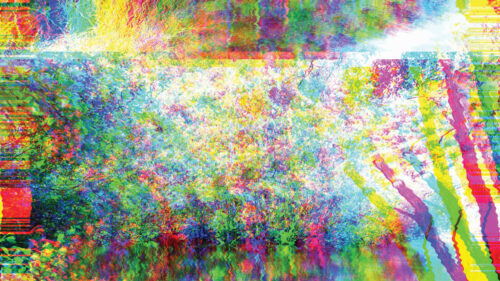
Sound Campus
University of Arts Linz
Embracing a collective and non-hierarchical approach, this year’s Sound Campus emphasizes the fluidity of sound expression and music making. Through notions of performativity and improvisation, a multidimensional stage provides a caring frame for solidarity and creation.
DORFTV
-

DORFTV–Radical Broadcast
UNIVERSITY OF ARTS LINZ (AT)
DORFTV is setting a solemn sign for the long-standing cooperation with the University of Arts Linz, inviting participation in the open system of the community broadcaster. Students of time-based and interactive media art aim to “break the boundaries of television” with their contribution for one evening.
Interface Cultures
Interface Cultures at Ars Electronica 2023—Resonating Selves
In an era in which truth is increasingly elusive and subjective, the latest Interface Cultures student exhibition Resonating Selves presents a captivating exploration of how our identities resonate and interact with the world around us. The fusion of technology and artistic expression enables a deeper understanding of the interplay between the digital and physical realms. Through the lens of media art, these artists probe the complexities of truth ownership and its influence on our sense of self.
The convergence of technology, particularly artificial intelligence (AI), plays a pivotal role in this context. AI, with its capacity to analyze and generate information, becomes a powerful tool for questioning truth and exposing the multifaceted layers of our identities. Resonating Selves, within the context of the Ars Electronica Festival 2023, amplifies the festival’s overarching theme of “Who Owns the Truth?”
The exhibition acts as a catalyst for introspection, fostering dialogue on the intricacies of truth in our increasingly mediated and interconnected world. Each of the projects presented in this exhibition push the boundaries of our perception, inviting viewers to critically examine the dynamic relationship between human subjectivity and the objective reality we seek to comprehend. From interactive installations to immersive experiences, each artwork engages visitors in a profound exploration of personal truths and collective narratives.
As visitors engage with the artworks, they become active participants in an ongoing dialogue about truth ownership and the construction of selfhood. By navigating these immersive experiences, audiences are encouraged to question their own preconceptions, biases and societal influences.
Join us on this captivating journey as we navigate the enigmatic territory of truth, technology and the resonance of our multifaceted selves. Explore the boundless possibilities of media art and experience the profound impact of AI as it shapes our perceptions of truth, identity and the complex narratives that intertwine them.
Faculty: Manuela Naveau, Laurent Mignonneau, Fabricio Lamoncha, Michaela Ortner, Gertrude Hörlesberger
-

@theorchid_beauty
Volkan Dinçer (TR)
In @theorchid_beauty, the orchid becomes a cyborg in symbiosis with social media, revealing the relationship between capitalism and nature. This orchid survives on Instagram likes. It has its own Instagram and uses it for its own needs. When it needs water, it posts a selfie on Instagram and gets watered with likes.
-
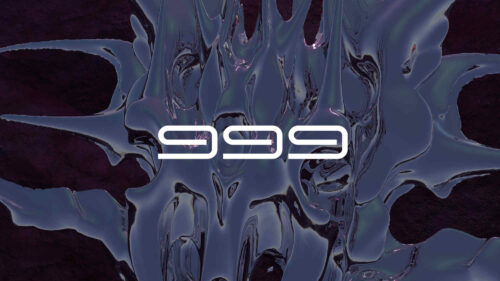
999
Bálint Budai (HU)
999 is a virtual-reality project researching the realm of psychedelic entities. Users embark on a mind-altering digital journey, through an immersive and transformative trance.
-
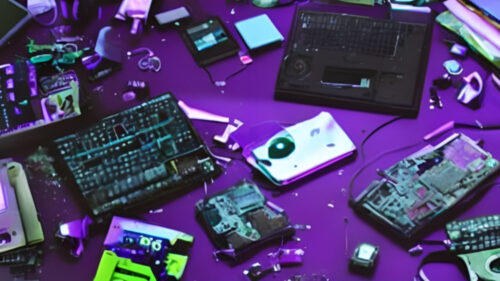
A Mesh/Mess Of Beings
Behiye Erdemir (TR)
Imagine being part of a network of devices. Data management sheds light on organizational challenges, misinterpretation and information transfer failure in your community. A Mesh/Mess Of Beings envisions an ecosystem where non-human entities prioritize their own interests, exploring absurd-yet-plausible relationships between familiar electronic devices.
-

Apophenia
Exhibition @ Kunsthalle Linz
An aesthetic presentation of speculative collective imaginaries and narratives invites the audience to question the constructed nature of our shared realities and notions of truth. Further aesthetic exploration of AI tools adds a new layer of complexity, amplifying new possibilities for biases and errors that can arise from this new shared agency.
-
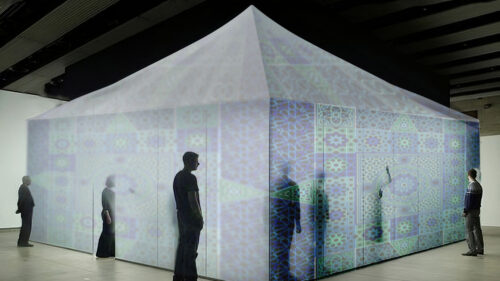
Contained Infinity
Salma Aly (EG)
Contained Infinity explores the philosophical themes behind Khayamiya, the art of tentmaking. Khayamiya art is a visual representation of the Egyptian community and identity.
-

Danube Songs
LEONARDO LASER LINZ
Welcome to Laser Talk Linz, organized by the Interface Cultures department at the University of Arts Linz. In 2021, Linz joined the Leonardo LASER network. We continue our series Danube Songs looking into water as medium.
-

Data Trail Diary
Danielius Marius Šermukšnis (LT)
Data Trail Diary explores current mass surveillance. Previously limited and more targeted by its physical, visible presence, surveillance is now being replaced by a relentless digital ghost, ever-present in all layers of our lives.
-
![Future[past]](https://ars.electronica.art/who-owns-the-truth/files/2023/08/09_miguel-rangil-futurepast-500x281.jpg)
Future[past]
Miguel Rangil (ES)
In the eyes of progress, the past is immutable. It is a crystallized mineral. It is a continuously growing, exponential segment. All the points form that line we call “History”; blessed and sacred events that have shaped our world as it is today. How can we get rid of History?
-

I died on Facebook
MAalex, Alex Fallica (IT), Martina Pizzigoni (IT)
I died on Facebook is a game experience set in a cemetery, where Facebook profiles have been memorialized by their loved ones. The artwork prompts us to contemplate the impact of our immaterial selves on our physical lives, and the consequences of prioritizing our online personalities.
-
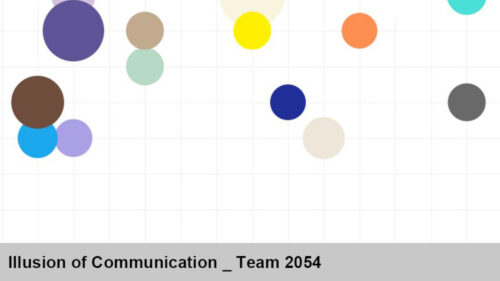
Illusion of Communication
Team 2054, Joann Lee (KR), Younggon Kim (KR)
Can we achieve perfect communication? The artwork consists of three parts: “Confiding,” “Sharing,” and “Spreading.” Users can experience unique communication. “Confiding”: user conversations are transformed into visuals. “Sharing”: is an open space for artist performances and translation.
-
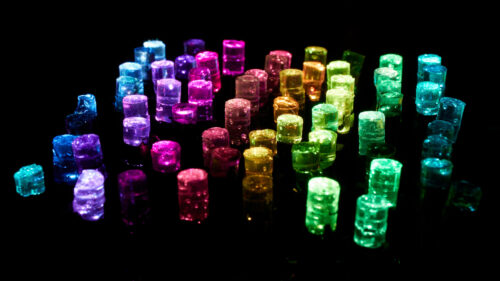
LumiCore: Light-hearted Touch Interface
Rene Preuer (AT), Ingrid Graz (AT)
LumiCore: Light-hearted Touch Interface blends art and science, fusing tactile and visual elements with the aim of creating an interactive environment to take you on an immersive journey beyond ordinary perception.
-
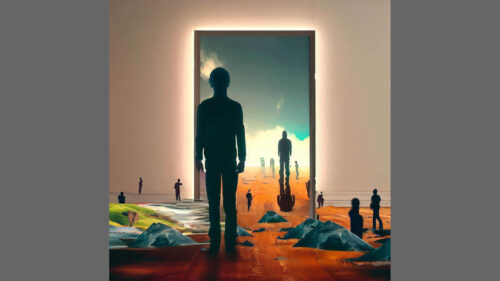
Mirror Me!
Ahmed Jamal (EG), Simon Weckert (DE)
Reflections are formed in our minds and shape our ideas about who we are. Mirror Me! is an attempt to answer from different perceptions, the question: Who am I? What is the nature of self-reflection and how does it shape our perception of personal identity?
-
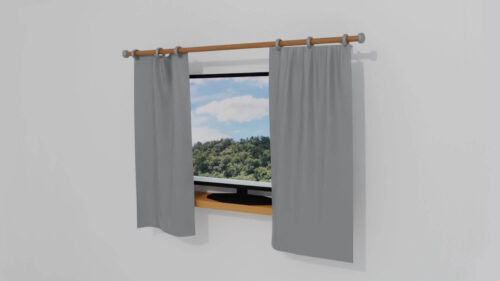
Parallax Window
Till Schönwetter (DE)
Parallax Window creates an interface in which perception is not a passive act of observation but an active engagement with the world. The work allows us to see the gap between different viewpoints, creating a parallax effect.
-
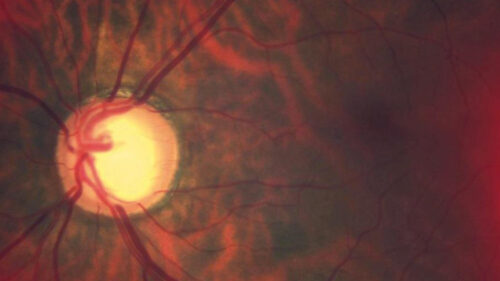
Qualia
Linaá Pulido Barragán (CO)
The artwork Qualia is an individual immersive experience that seeks to alter the viewer’s perceptually diverse range of experiencing realities. Through an optical and virtual sonic landscape, the user is induced to encounter the “reality” that is juxtaposed inside the eyeball and the image from outside.
-

Raindrop Price Index–You Cannot Refill A Sea With Tears
Maria Orciuoli (IT)
Raindrop Price Index features two generative animations based on measurements of terrestrial ecosystems’ water balance cycles.
-

Reconsolidated Memories
Viktória Angyal (HU)
Reconsolidated Memories is an interactive video installation using pictures from the artist’s archive to illustrate how memories are processed and manipulated by the brain.
-

Resonating Absence
Emma Silvana Tripaldi (IT)
Resonating Absence is inspired by a feeling defined by the untranslatable word “Awumbuk.” This refers to the melancholy and sense of emptiness that lingers after visitors have left. The work detects the presence and movement of the viewers and attempts to communicate with them.
-

Self Dissolution
Katsuki Nogami (JP)
This work explores the personal interior and dissolves it through collective interaction. Participants occupying the space are scanned to reveal layers of a hybrid human radiological volume. As these layers build up, more of its form is revealed.
-
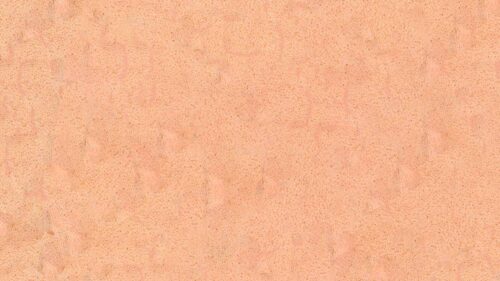
Skin Street
Katsuki Nogami (JP)
After I experienced racism, Skin Street encouraged me to interact with society and expand my comfort zone in this new city.
-

Unlearning Gender
Jelena Mönch (DE), Miguel Rangil (ES)
Unlearning Gender speculates on alternative modes of categorization to resist algorithmic-binary normalization. Through the symbolic hacking of the computer vision interface, the project aims to escape from gender and break with the technosocial binarisms embedded in technology.
-

What we like to remember
Katherine Romero Martinez (CO)
What we like to remember is a performance and sound installation, gathering four artists from the University of Arts Linz at Interface Cultures to inquire about the nature of memory and community.
Credits
Manuela Naveau
Initiator and Curator of Kunstuni Campus@Ars Electronica Festival, Professor of Critical Data at the Interface Cultures Department of the University of Arts Linz
Marlies Hajnal, Simon Hochleitner
Project Management of Kunstuni Campus@Ars Electronica Festival

